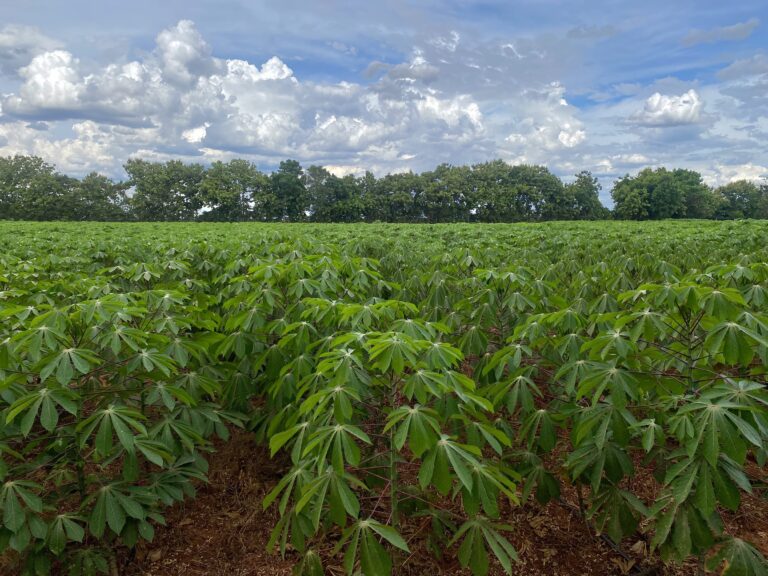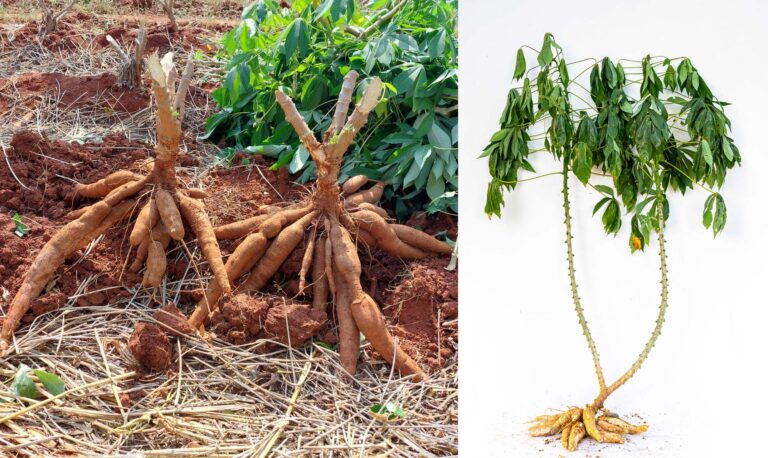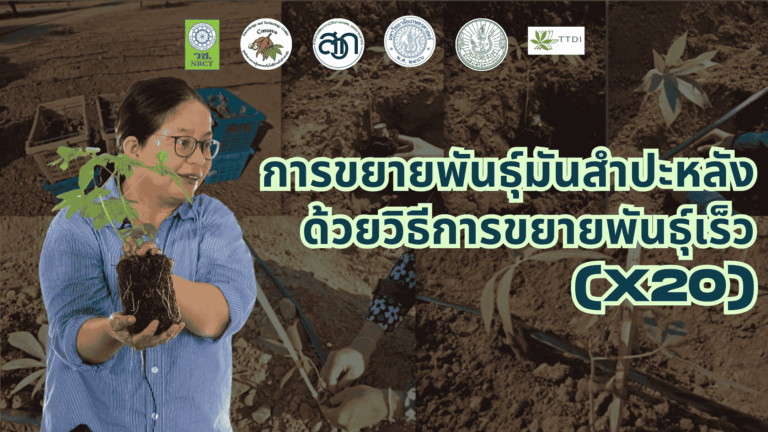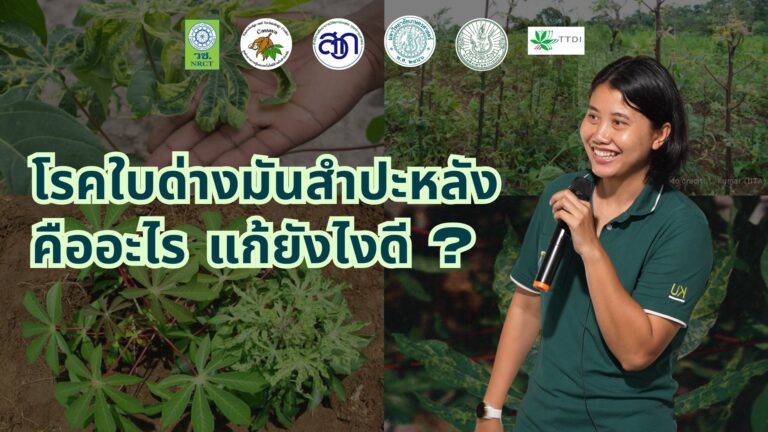
Cassava (Manihot esculenta Crantz) is an important economic root crop widely cultivated by farmers in Thailand. It is highly resistant to drought, making it suitable for cultivation in areas. Cassava can thrive in low-fertility soils that build cassava to simply propagate and appropriated for farmers that struggles with limited financial in sufficiency.
In 2022, according to the Agricultural Statistics of Thailand, Thailand was the world’s third-largest producer of cassava, following Nigeria and the Democratic Republic of Congo. The total harvested cassava area in Thailand was 9.92 million rai*. For the Thai’s cassava export markets were majority included China and Japan (mentioned data from the Office of Agricultural Economics (OAE) as of January 8, 2024). Cassava cultivation is widespread across all regions of Thailand, by the Northeastern region being the largest producer due to its predominant sandy loam and saline soils, which are suitable and preference for cassava cultivation (Ploddee et al., 2017; El-Sharkawy, 2012; Khanbut et al., 2023). In 2024, the provinces with the highest cassava production is Nakhon Ratchasima, followed by Chaiyaphum and Kamphaeng Phet (OAE, 2024).
However, the recently reports in 2024 indicated that the harvested area, productive value, and cassava-derived products declined to 33.54 million tons, while the export value decreasing by 17.40% compared to 2023 (Source: Agricultural Information Center, OAE). The key factors contributing included drought and irregular rainfall from 2023 to early 2024. Additionally, the outbreak of cassava mosaic disease, which spreads through infected stem cuttings and tobacco whiteflies (Bemisia tabaci), this factor has severely impacted cassava growth, causing of stunning, reduced tuber size and yields, or even total crop failure. In some areas, farmers have abandoned their cassava fields or switched to other crops with lower effortless in production costs, such as sugarcane and animal feed corn. Consequently, Thailand’s harvested cassava area decreased from 9.27 million rai in 2023 to 8.68 million rai in 2024, which calculated as a 6.36% decline (Source: OAE, 2024).
Market Outlook for 2025-2026
The cassava market outlook for 2025-2026 suggests that it tend to increased production, driven by expanded harvested areas to coordinate with the rising demand for cassava products, which is expected to grow by 3.0-5.0% per year. Cassava root prices have remained favorable, increasing to 3.10-3.30 THB per kilogram since 2024 due to insufficient fresh cassava supply for the processing industry. This price increased may encourage or interest some farmers to expand cassava cultivation, thereby result to increasing the harvested area. According to an analysis by Krungsri Research Institute, the cassava industry is expected to enhance during 2024 and 2026, motivated by the expanding demand for ethanol production, animal feed, alcohol, and food security stockpiling in export markets. As subsequence form the extended impact of global conflicts has further contributed to the food consumption and energy assurance. However, the cassava production and capacity remains uncertain due to climate variability, disease outbreaks, and market fluctuations.
One significant challenge is the continued cassava mosaic disease (CMD) outbreak in Northeastern Thailand, which remains a major issue for cassava cultivation. The CMD issue is expected to be more severe and intensify due to a shortage of propagative stem (healthy cassava cuttings) and rising prices of planting materials. Furthermore, The Krungsri Research Institute report documented that cassava root prices in 2026 will decrease to 2.8-3.0 THB per kilogram as associated as decreasing of demanding followed by the resolution of the El Niño phenomenon, that leading to effecting of cassava’ growing conditions.
*1 Rai approximately 0.16 hectare
References
Ploddee, P., S. Phoona and B. Mokmoor. 2017. Soil Capacity Assessment Guidelines for Planting Cassava in Nakhon Ratchasima. Land Development Department, Bangkok. 132 p. (in Thai)
Krungsri Research. 2024. Industry Outlook 2024-2026: Cassava Industry. (Online). Available: https://www.krungsri.com/en/research/industry/industry-outlook/agriculture/cassava/io/ cassava-2024-2026 (02/20/2025).
El-Sharkawy, M.A. 2012. Stress-tolerant cassava: The role of integrative ecophysiology-breeding research in crop improvement. Open Journal Soil Science 2: 162-186.
Khanbut K., Polthanee A., Taweekul K., Borisudhi Y., Panpakdee C. 2023. Factors Influencing Prevention of Cassava Mosaic Disease (CMD) of Farmers in Nong Bua Rawe District, Chaiyaphum Province. Journal of Agriculture 39(3): 341 – 353 (in Thai)





